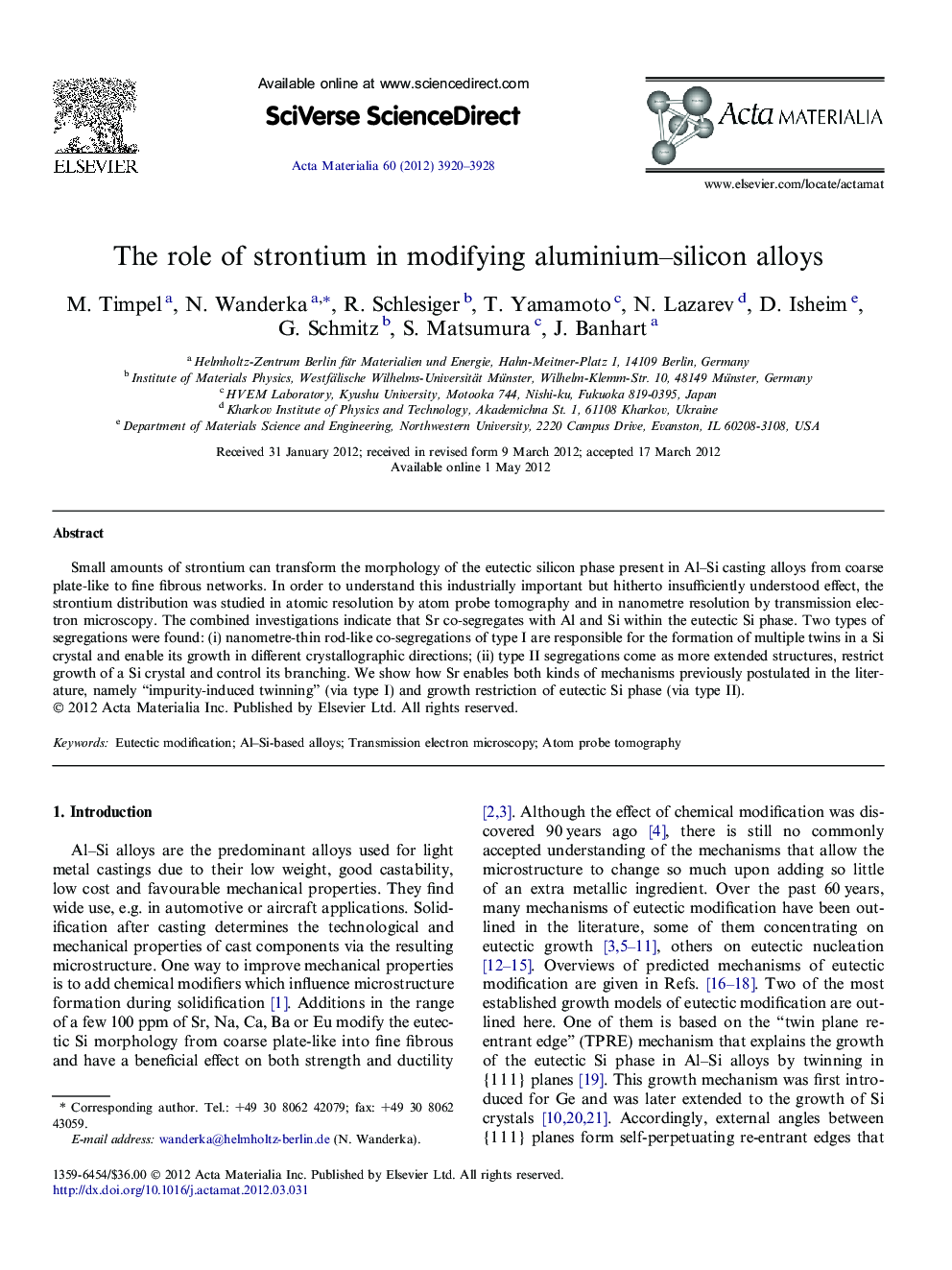| Article ID | Journal | Published Year | Pages | File Type |
|---|---|---|---|---|
| 1446745 | Acta Materialia | 2012 | 9 Pages |
Small amounts of strontium can transform the morphology of the eutectic silicon phase present in Al–Si casting alloys from coarse plate-like to fine fibrous networks. In order to understand this industrially important but hitherto insufficiently understood effect, the strontium distribution was studied in atomic resolution by atom probe tomography and in nanometre resolution by transmission electron microscopy. The combined investigations indicate that Sr co-segregates with Al and Si within the eutectic Si phase. Two types of segregations were found: (i) nanometre-thin rod-like co-segregations of type I are responsible for the formation of multiple twins in a Si crystal and enable its growth in different crystallographic directions; (ii) type II segregations come as more extended structures, restrict growth of a Si crystal and control its branching. We show how Sr enables both kinds of mechanisms previously postulated in the literature, namely “impurity-induced twinning” (via type I) and growth restriction of eutectic Si phase (via type II).
